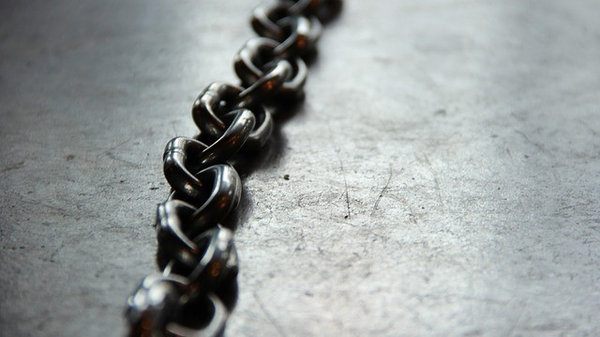What steel refers to?
An alloy of iron is referred to as steel. Since the essential component utilized in the process of alloying, apart from iron, is carbon, its carbon content is characterized by carbon. Steel can have anyplace somewhere in the range of 0.002% and, by weight, has a carbon of 2.1%, yet consistently contains littler measures of silicon, manganese, phosphorus, sulfur, and hints oxygen, aluminum, and nitrogen notwithstanding iron and carbon. Buy 304 stainless steel tube for the best outcomes.

While every such component is necessary to be present in an alloy to be precisely called ‘steel,’ the other elements include nickel, manganese, molybdenum, chromium, titanium, and boron, niobium, and vanadium, might be incorporated for modifying the attributes of the alloy.
Let’s focus on stainless steel, framed by making an alloy of steel containing chromium at least 10.5% by mass.
Why stainless steel stands out compared to other metals/steel?
Under the states of high dampness and high saltiness, the iron present inside the steel will oxidize to frame iron oxide. The iron oxide’s layer on the steel’s outer part can build the pace of its development, accordingly reassuring excess corrosion to happen and making the steel structure undermined. The steel (stainless) contains an adequate chromium amount to encourage the development of a chromium oxide layer on the exterior materials. This chromium oxide layer doesn’t catalyze more chromium oxide development and assists in shielding the iron inside the structure from oxidation. This is the property known by the term ‘passivation.’ Because of this property, stainless steel is extremely corrosion safe, although the material’s brilliance can, under specific conditions, get lost, so it isn’t really ‘stainless.’
Families of Stainless Steel:
Although the corrosion obstruction of stainless originates from Chromium’s presence, different components are added to upgrade other properties. These elements change steel’s microstructure. Buy 304 stainless steel tube for optimum results.
Stainless steel is gathered into families dependent on their microstructure, which is metallurgical by nature. The microstructure might be made out of the steady stages austenite or ferrite; a “duplex” blend of these two, martensite, or a solidified structure containing hastened small scale constituents.
Stainless steel grades:
With a limitless number of blends of alloying elements, the stainless steel can be alloyed with. Hence a system of classification has been created to encourage simple determination of the mixes utilized. The steel (stainless) has its rundown of categories; each of them will be clarified underneath. Note that a portion of the sorts of steel (stainless) are portrayed as ‘austenitic,’ implying that they are made out of iron’s the gamma allotrope:
- The 102 types: It is an austenitic, broadly useful stainless steel generally utilized in furniture.
- The 200 Series: It is an austenitic alloy series of nickel-manganese- chromium utilized for broadly useful metalwork.
- The 300 Series: It is an alloy series of nickel and austenitic chromium. It consists of the most mainstream stainless steel grade, which is grade 304. This stainless steel series is utilized for utensils for cooking and clean instruments and sinks.
- The 400 Series: It is the alloy series of ferritic chromium and martensitic. It has probably the least expensive stainless steel utilized for vehicle depletes, cutlery steel of some higher grades, and the absolute most rigid steel(stainless) used for blades manufacturing.
- The 500 Series is the heat-safe alloy series of chromium.
- The 600 Series is the series of martensitic alloy framed by precipitation solidifying.
- The Type 2205is (both austenitic and ferric) duplex alloy with superb quality and corrosion opposition.
- The Type 2304is an alloy like sort 2205 in all regards, aside from lower molybdenum content, prompting decreased pitted corrosion opposition.
Stainless steel (304 Grade):
The 304 grade is the most popular type of stainless steel grade. It is a grade which consists of chromium (about 18 to 20%) and nickel content of 8 to 10.5% by mass. However, a low-carbon option exists (304L) compared to 304, versions of 304N and 304Cu, advanced in nitrogen and copper separately, are also available. This kind of steel is additionally frequently alluded to as stainless steel of A2 type. The 304 Grade offers a noteworthy quality and a mind-boggling corrosion opposition, loaning it to applications in which touch with food materials, synthetic substances, or water must be endured. Stainless steel of 304 Grade likewise has properties that make it appropriate to machining and welding applications, subsequently developing it into an ideal element for machining components.
Stainless steel (316 Grade):
Another most basic type is grade 316 stainless steel. They have properties that are similar to that of 304 grade, both physically and mechanically. However, the critical distinction is that grade 316 consolidates molybdenum of around 2-3 percent. Molybdenum is a property that protects against chlorides and other mechanical solvents, giving the steel a more grounded corrosion obstruction.
Conclusion:
Stainless steel is an advantageous and popular material for manufacturing industries. Hence, their usefulness can never be undermined. All its grades have different kinds of features, which show why it is the most trusted material worldwide.




Recent Comments